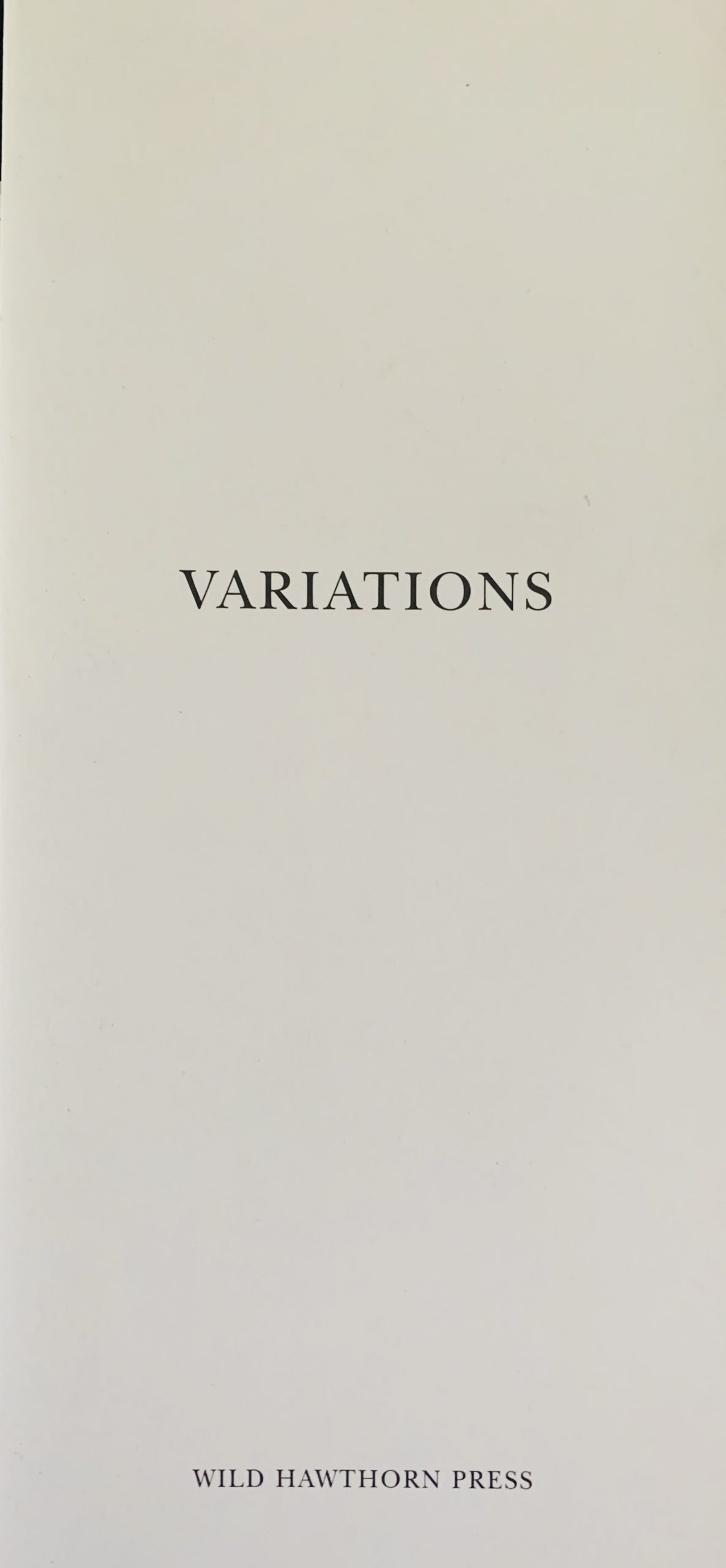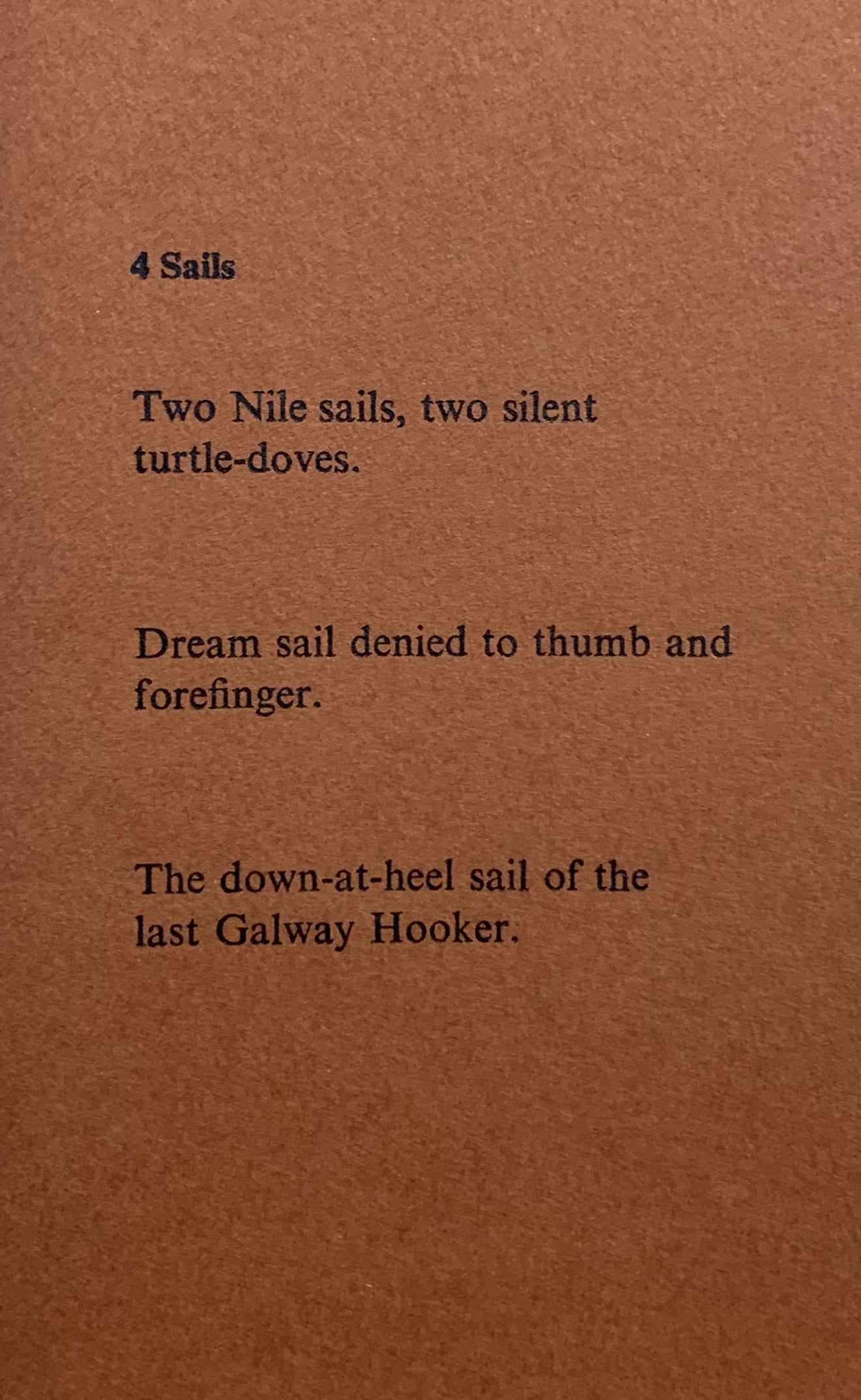Posted at 20:28h
in
Artist's Books
Little Sparta: Wild Hawthorn Press, 1999.
29.5 x 14cm, 12pp plus cards and printed dust jacket. Artist's book with a poems by Johann Wolfgang von Goethe and it's English translation by Samuel Taylor Coleridge which have linocut illustrations by Jo Hincks and then a variant on the poem by Finlay where the original poem's landscape is replaced by a scene of boats (which are blue lemons):
Do you know the land where the blue lemons ride
A silver fountain springs from the vessel's side?
There, in the stern, the orange net-floats glow,
The brown sail shifts, the salt winds gently blow.
DO you know it well, that land, beloved friend?
"Thither with thee, O, thither would I wend!"
The poem also is a thought of death and heaven. FInlay's version is also illustrated by Hincks - making the boat references more obvious (the fountain for example is the bilge water spraying out)>
VG+ example.
...














